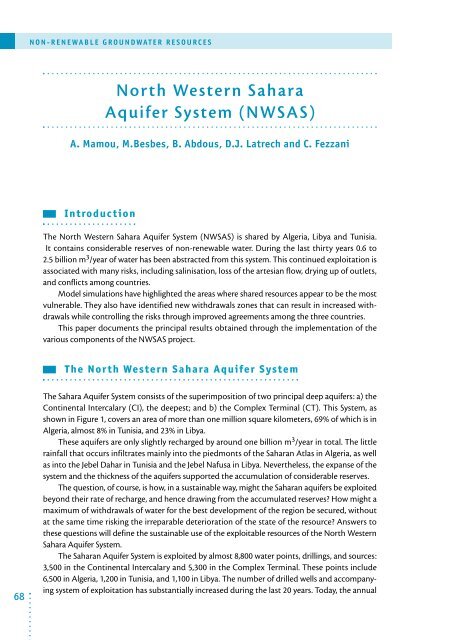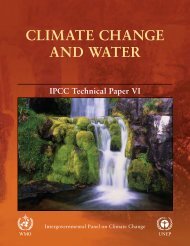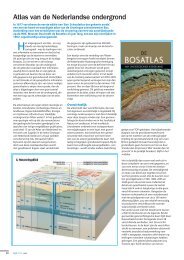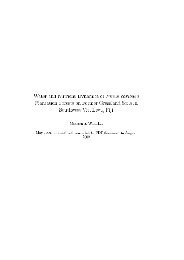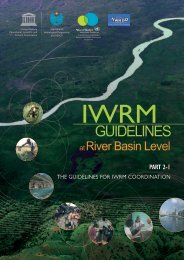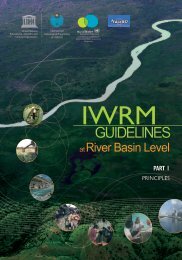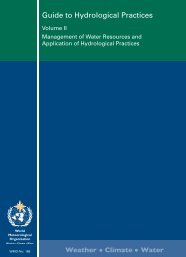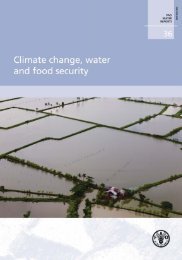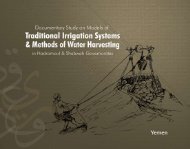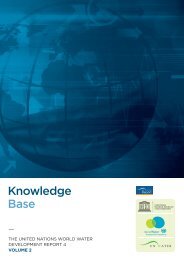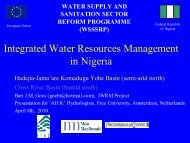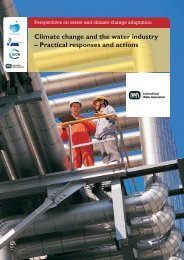Non-renewable groundwater resources: a ... - unesdoc - Unesco
Non-renewable groundwater resources: a ... - unesdoc - Unesco
Non-renewable groundwater resources: a ... - unesdoc - Unesco
- No tags were found...
Create successful ePaper yourself
Turn your PDF publications into a flip-book with our unique Google optimized e-Paper software.
NON-RENEWABLE GROUNDWATER RESOURCESNorth Western SaharaAquifer System (NWSAS)A. Mamou, M.Besbes, B. Abdous, D.J. Latrech and C. FezzaniIntroductionThe North Western Sahara Aquifer System (NWSAS) is shared by Algeria, Libya and Tunisia.It contains considerable reserves of non-<strong>renewable</strong> water. During the last thirty years 0.6 to2.5 billion m 3 /year of water has been abstracted from this system. This continued exploitation isassociated with many risks, including salinisation, loss of the artesian flow, drying up of outlets,and conflicts among countries.Model simulations have highlighted the areas where shared <strong>resources</strong> appear to be the mostvulnerable. They also have identified new withdrawals zones that can result in increased withdrawalswhile controlling the risks through improved agreements among the three countries.This paper documents the principal results obtained through the implementation of thevarious components of the NWSAS project.The North Western Sahara Aquifer System68The Sahara Aquifer System consists of the superimposition of two principal deep aquifers: a) theContinental Intercalary (CI), the deepest; and b) the Complex Terminal (CT). This System, asshown in Figure 1, covers an area of more than one million square kilometers, 69% of which is inAlgeria, almost 8% in Tunisia, and 23% in Libya.These aquifers are only slightly recharged by around one billion m 3 /year in total. The littlerainfall that occurs infiltrates mainly into the piedmonts of the Saharan Atlas in Algeria, as wellas into the Jebel Dahar in Tunisia and the Jebel Nafusa in Libya. Nevertheless, the expanse of thesystem and the thickness of the aquifers supported the accumulation of considerable reserves.The question, of course, is how, in a sustainable way, might the Saharan aquifers be exploitedbeyond their rate of recharge, and hence drawing from the accumulated reserves? How might amaximum of withdrawals of water for the best development of the region be secured, withoutat the same time risking the irreparable deterioration of the state of the resource? Answers tothese questions will define the sustainable use of the exploitable <strong>resources</strong> of the North WesternSahara Aquifer System.The Saharan Aquifer System is exploited by almost 8,800 water points, drillings, and sources:3,500 in the Continental Intercalary and 5,300 in the Complex Terminal. These points include6,500 in Algeria, 1,200 in Tunisia, and 1,100 in Libya. The number of drilled wells and accompanyingsystem of exploitation has substantially increased during the last 20 years. Today, the annual


